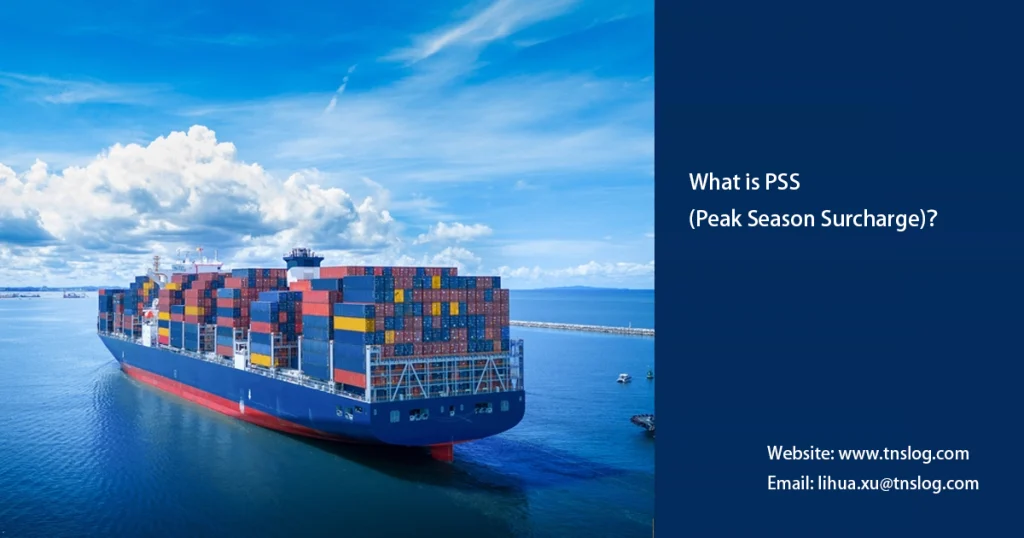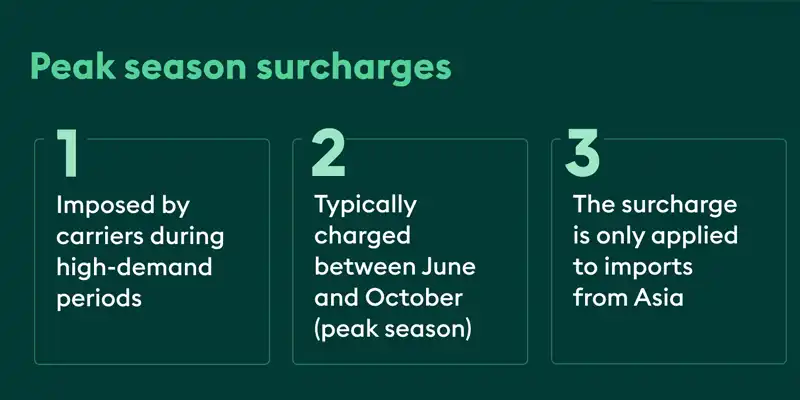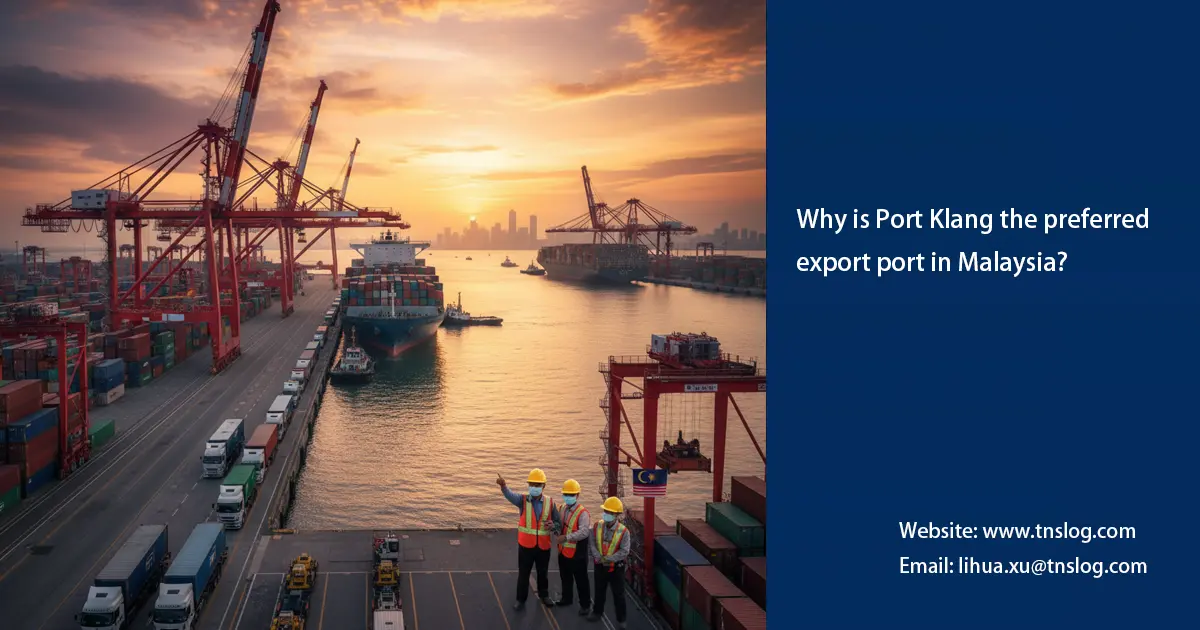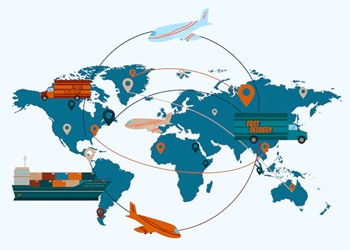What is PSS (Peak Season Surcharge)?
Have you noticed your ocean freight rates spiking unexpectedly? As the 2025 peak season hits full swing—with Double 11 and Christmas shipments piling up—Peak Season Surcharge (PSS) is turning routine exports into costly headaches. Suddenly, that standard container from Malaysia to the US or Europe costs hundreds more per unit, squeezing margins and delaying deliveries. It’s frustrating: demand surges, space tightens, and suddenly your logistics budget is in chaos.
At TNSLOG SERVICES SDN BHD, we’ve navigated these surges for years as a dedicated Malaysian freight forwarder. This guide breaks it down: what PSS really means, why it’s hitting now, its ripple effects on your operations, and proven ways to fight back against freight rate increases. By the end, you’ll have actionable steps to safeguard your cargo shipping from Malaysia—keeping costs down and flows steady. Let’s dive in and reclaim control.

What Is Peak Season Surcharge (PSS)? Unpacking the PSS Surcharge Definition and Origins
Peak Season Surcharge (PSS) is the shipping line’s go-to fee during high-demand periods, designed to offset the crunch when bookings flood in and capacity strains. It emerged as a response to seasonal trade booms, like the rush of consumer goods from Asia to Western markets. Unlike baseline rates, PSS kicks in temporarily to prioritize space and cover overtime or extra vessels.
In 2025, these surcharges are rolling out across key routes from Malaysia. For instance, Hapag-Lloyd shifted its PSS on East Asia (including Malaysia) to North America to June 1, applying to all containers entering the gate from that date. Meanwhile, Maersk introduced a PSS from Asia Pacific regions—like Malaysia—to Africa starting September 1, targeting shipments from ports in China, Singapore, and Malaysia to maintain service reliability. These moves reflect the ongoing pressure on transpacific and intra-Asia lanes, where PSS often lasts from midsummer through year-end.
To clarify, PSS stands apart from other fees like GRI (General Rate Increase), which adjusts base rates annually for inflation, or BAF (Bunker Adjustment Factor), tied to fuel volatility. The table below highlights these distinctions, showing how PSS uniquely targets seasonal spikes with examples relevant to Malaysian exports:
| Surcharge Type | Meaning | Trigger | Malaysian Route Example (2025) |
|---|---|---|---|
| PSS (Peak Season Surcharge) | Extra fee for peak demand periods | Seasonal highs, e.g., holidays | Malaysia to North America: $1,350 per 20' container from June 1 |
| GRI | Annual base rate hike | Inflation/demand growth | All-year 10–15% adjustment across routes |
| BAF | Fuel cost adjustment | Oil price swings | Monthly updates, averaging 5–10% on Malaysia exports |
| EBS | Emergency fuel surcharge | Sudden crises like geopolitical events | Rare in 2025 so far, but could activate anytime |
Why Do Shipping Lines Charge Peak Season Surcharge?
Shipping lines don’t impose PSS out of thin air; it’s a direct reaction to market dynamics where supply can’t keep pace with explosive demand. During peaks, vessels fill to 95% capacity or more, containers pile up at Malaysian ports like Klang, and lines scramble to reroute empties. The surcharge steps in to ration space for high-priority cargo while recouping costs for chartered ships or expedited handling—essentially, a tool to stabilize the network without halting service.
Take why shipping lines charge PSS: it balances the equation when holiday rushes from Malaysia amplify global flows. In 2025, this is evident in routes like Asia to Oceania, where Maersk revised its PSS effective August 5, setting $300 per 20′ dry container to New Zealand and Fiji amid rising volumes. Similarly, Hapag-Lloyd’s PSS to Southwest Africa from Asia and Oceania, at $200 per TEU starting May 22, addresses the same bottleneck. For Malaysian shippers, these peak season freight rates from Malaysia climb 15-20% in hotspots like post-Eid (April-May) or pre-Double 11 (October-November), as lines like MSC layer on fees from June 2 for broader regional adjustments.

How Does PSS Impact Exporters and Importers? The Real Toll of PSS on Export Costs
PSS doesn’t just pad line profits—it reshapes your entire cost equation, starting with a direct hit to freight forwarding costs from Malaysia. For full container loads (FCL), it might add a flat $700-1,350 per unit, but less-than-container loads (LCL) get dinged proportionally by volume, often amplifying the pain for smaller shipments. This freight rate increase cascades: exporters face immediate outlays that eat into quotes, while importers absorb hikes passed downstream, inflating landed costs and straining inventory planning.
The broader ripple? Cash flow tightens as payments for surcharges demand upfront capital, potentially delaying reinvestments or forcing rushed financing. Profit margins shrink—imagine a 20% PSS uplift on a tight-margin electronics run from Malaysia to the US, turning slim gains into losses. Supply chains stretch too: with space at a premium, lead times balloon by days or weeks, risking missed sales windows like Black Friday. For trade flows involving Malaysia, where exports to Europe and the Middle East already navigate tight margins, PSS exacerbates vulnerabilities, turning seasonal opportunity into operational stress. Recognizing this PSS impact on export costs is the first step to mitigation—it’s not inevitable, but ignoring it invites deeper trouble.
Strategies to Counter Peak Season Surcharge
Countering PSS starts with foresight, not reaction—shifting from scramble to strategy keeps your shipping costs in check. Begin by tracking line announcements closely; for example, knowing Hapag-Lloyd’s June 1 rollout for East Asia to North America lets you book two to three months ahead, securing rates before the floodgates open. This preemptive booking locks in space at lower tiers, dodging the full brunt of the surcharge.
Timing your shipments offers another lever: steer clear of Malaysia’s peak windows like August-October by front-loading to shoulder seasons, such as July or late November, when capacity eases and rates dip. Pair this with partnering a seasoned freight forwarder for Malaysian routes—their leverage through long-term contracts and space pooling can shave 10-20% off PSS exposure via negotiated blocks or alternative routings. Think consolidated LCL for shared loads or transshipment through Southeast Asian hubs to bypass congested mains; add smart warehousing to buffer delays, turning potential chaos into smooth orchestration.
In essence, how to avoid PSS surcharge boils down to integrated planning: monitor, time, and collaborate. Malaysian freight forwarding solutions like these transform peaks from threats to manageable humps, preserving your bottom line.
How We Cuts Your Peak Season Shipping Costs?
TNSLOG SERVICES SDN BHD—a Malaysia freight forwarding company rooted in Port Klang since 2009, delivering end-to-end logistics for routes from Malaysia to the US, Europe, and Southeast Asia. Our suite spans ocean and air freight, customs brokerage, warehousing, and LCL consolidation, all tuned to PSS realities.
What sets us apart? Our team’s pulse on market shifts, like the 2025 Maersk Africa PSS from September 1, enables proactive defenses. In one case, we rerouted a client’s electronics shipment to North America via early contracts and transshipment, slashing PSS by $500 per container while hitting deadlines. Another involved apparel exporters dodging August peaks through pooled space, trimming overall costs 15% and ensuring Christmas stock arrived intact.
As a TNSLOG SERVICES freight forwarder, we craft bespoke plans: instant quotes, risk forecasts, and round-the-clock tracking. It’s not generic service—it’s tailored armor against freight rate hikes, empowering steady, cost-smart shipping.
You may also be interested in
Have Anything To Ask Us?
Please fill in your email in the form and we’ll get back to assist you soon!




